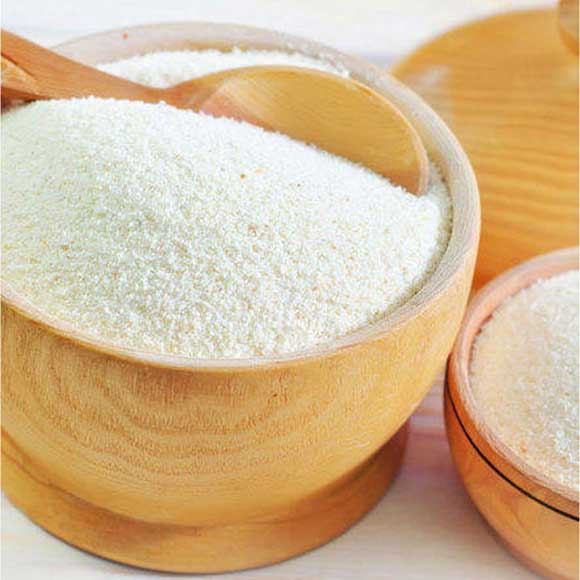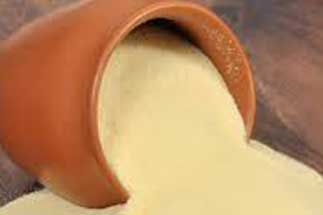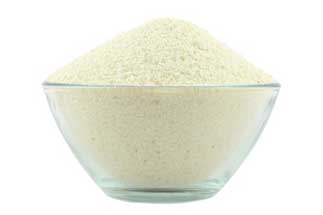Semolina is a high-gluten flour made from hard durum wheat. It has a rather coarse texture, yellow color, and is high in gluten protein. The high gluten content means the flour is especially well suited for making pasta, but this flour is also a common ingredient in bread and baked goods as well as couscous. Semolina is available throughout the world but is most popular in Italy.
Fast Factss
• Fiber and Protein: Significantly more than all-purpose
• Common Use: Homemade pasta
• Grocery Aisle: Baking
Varieties
Semolina flour can be purchased in coarse, medium, and fine textures. The most common is medium grind, meaning the coarse and fine textures may be more difficult to find in stores. The fine grind is similar in texture to all-purpose flour.
Semolina Uses
One of the most common uses for semolina flour is making pasta from scratch. It is an ideal flour because of the gluten content, which creates a less sticky dough and is much more elastic than other flours. This helps the pasta hold its shape when cooking, whether that shape is a long spaghetti noodle or an elbow.
Semolina is also used to make couscous, which is simply moistened semolina that is mixed until little balls form. In addition, this flour is good for making bread, cakes, and pizza, as well as porridge and pudding. In Morocco, semolina flour (called smida) is the key ingredient in khubz, an oven-baked round flatbread, and it finds its way into cakes in countries like Greece and Turkey. In India, where it is referred to as rawa or sooji, semolina is cooked into a porridge and also make savoury dishes and sweet dishes like rava dosa, rava idli, upma, khichdis,rava ladoo, sooji halwa etc. It is used for sweet puddings in Europe and is a staple ingredient in Nigeria, where it's boiled with water and eaten with stews and soups. Semolina is also commonly sprinkled onto pizza pans before baking pizza crusts.
How to Cook with Semolina
When incorporating semolina flour into homemade pasta and baked goods recipes, it is used similarly to any other type of flour, where it is combined with wet and sometimes other dry ingredients. It is also added to gravies, soups, and stews as a thickener, and can be used to prevent sticking when baking with dough. To create a filling breakfast porridge, boil semolina along with milk until thickened. Semolina can also be replaced for some or all of the flour in baking recipes, including cookies, where it imparts a crisp, crumbly texture.
As with any type of flour, it should be scooped into the measuring cups rather than the cups being dipped into the flour bag. Dipping can add extra flour to the recipe, which will make the pasta dough drier and harder to work with.
What Does It Taste Like?
Semolina has a sweet, nutty flavour and earthy aroma. It also contributes that signature yellow colour to the pasta.








